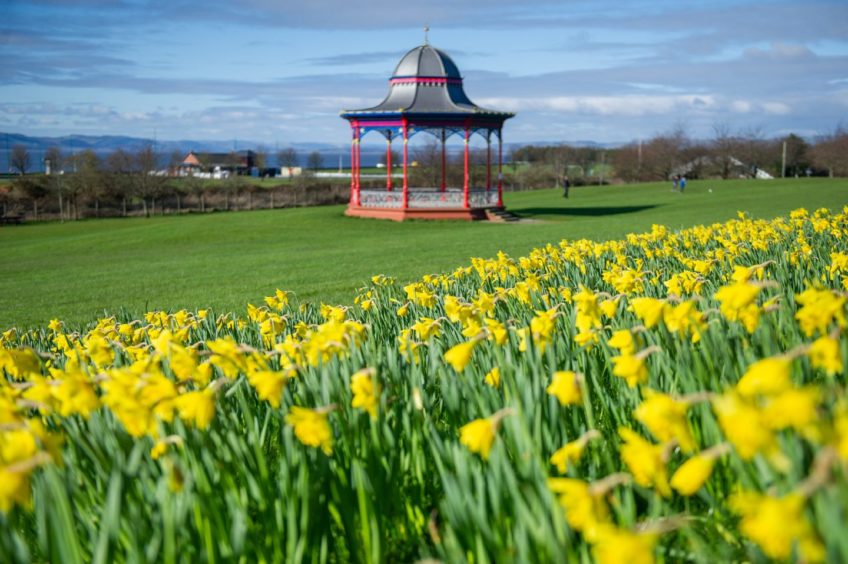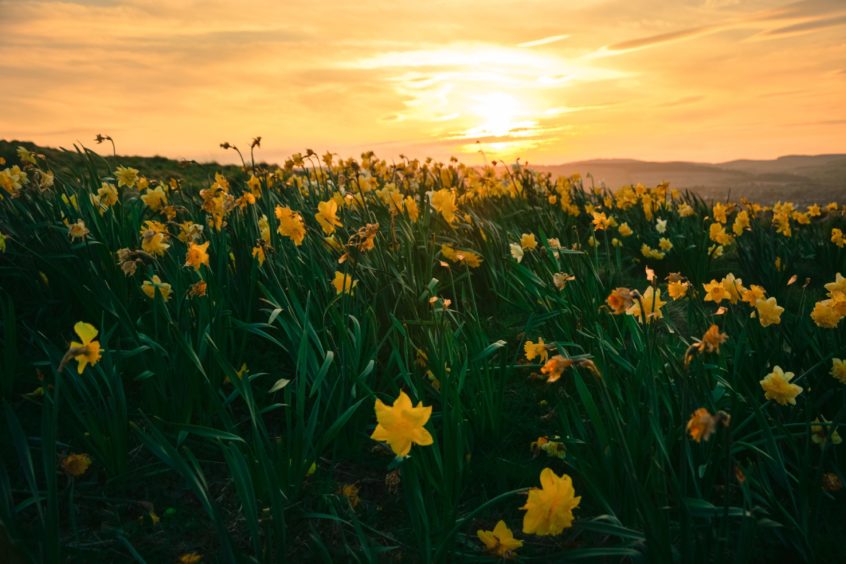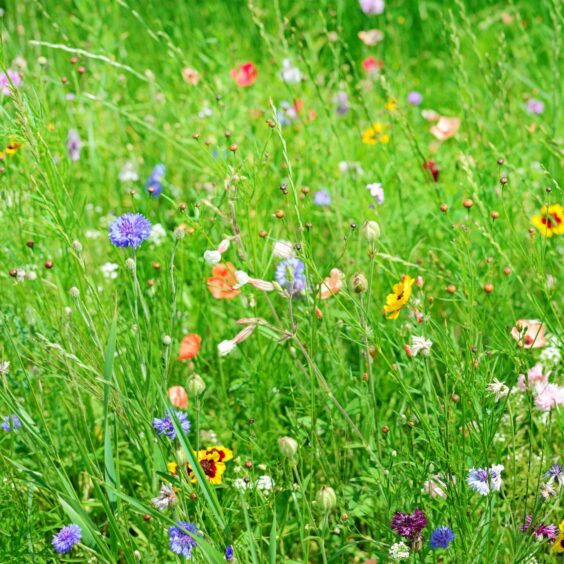As we make our way through April, slowly we start to see the early spring daffodil display coming to an end.
Anything that flowers at this time of year has to be tough for putting up with the Scottish weather- wind, snow, rain, freezing cold temperatures then unseasonably warm temperatures, and that can be in just the one day!
However, like us all, the one thing they can’t escape is Father Time and what just the other week were bright and cheerful mass daffodil displays in our public parks and private gardens, are now splattered with withering flower heads turning brown after finishing doing there thing.
Cycle of growth
Without the vigour and enthusiasm of youth there’s no denying they are coming to a phase of their growth cycle where visually they don’t look as good anymore.
The displays naturalised in grass under the canopy of our still leafless trees don’t look so smart anymore now that some of the daffodil foliage is standing up whilst other leaves have lost their strength and flopped over, tangled amongst the now growing lawn grass.
This ‘mess’ unfortunately stands out even more on the clumps of daffodils growing in our beds and borders which other than this, are looking immaculately tidy.
The lush, green shoots coming from our shrubs, and those bursting out of the ground from our herbaceous plants, emerging from soil top dressed with fresh compost, look just glorious at the moment all prepped for the season ahead.
At this point is when I start to feel sorry for the daffodil as gardeners up and down the country wonder what to do with them them in the meantime.
Scalping the foliage
In lots of cases this results in scenes of daffodil massacre and torture as the foliage is scalped to the ground prematurely or tied and bundled thus bruising and wounding them.
The best thing we can do for them is to put up with a bit of untidiness and the let the bulbs fade away naturally.
We’re only looking at a short time, usually for a period of around six weeks after the last of your daffodil blooms.
This allows enough time for the bulb to be able to complete its natural life cycle, storing up energy before a period of dormancy so it has the strength to put on a show and flower for us again next year.
During this time you may see a small ball form where the daffodil flower used to be, these contain the developing seeds for the next generation.
Unless you fancy harvesting the seeds for sowing come the autumn and having a go at growing your own, feel free to pick these off.
You won’t do the plant any harm indeed you may even help the flowering of next year as at this stage energy is being diverted from the storage organs within the bulb to create this seed so taking away the head will make sure the work is happening just where we want it.
Picking off seed heads
To be honest, picking off the seed heads is something I’ve never done before to my daffodils and haven’t seen any decrease in the quality flower the following year.
In the Scone Palace grounds where I work with displays containing thousands and thousands of daffodil bulbs this is not really something we have the time for.
Every year though I do often ask myself how long it would take to remove all of these seed heads, one year I’ll give it a go, just not this year.
With all the other tasks needing carried out in spring, the cutting down and tidying of the long grass where daffodils grew is not something I do until mid-June.
Areas around the home are started first to neaten up the appearance, before then spreading out to the further parts of the garden.
However, over the last decade our thinking has changed and we are more inclined to leave these areas alone for the benefit of biodiversity.
Encouraging wildflowers
We are now only a few weeks away from the annual ‘No-Mow May’ movement, where we are all encouraged by the Plantlife organisation to liberate our lawns and let the wildflowers within them grow free.
I suspect everyone of us thinks our lawns are made up 100% of the sword like blades of grass but look closely and you will also see plants of familiar daisy, rounded leaves of clover and the creeping, square stemmed self-heal.
Allowing them to grow and flower not only will add colour and interest not usually expected from an aspect of your garden but will also give wildlife a boost by providing our bees, butterflies and other pollinators with a feast.
If you’re unsure then why not experiment on a wee corner of your lawn or a patch at the bottom of your garden, at the end of the the day if you don’t like it you just start cutting it again.
This is a permanent feature of my garden now in the front lawn, I still cut a border around the edge so to frame and a wee path through the middle, I wouldn’t wont anybody thinking I’d just abandoned my lawn!





Conversation